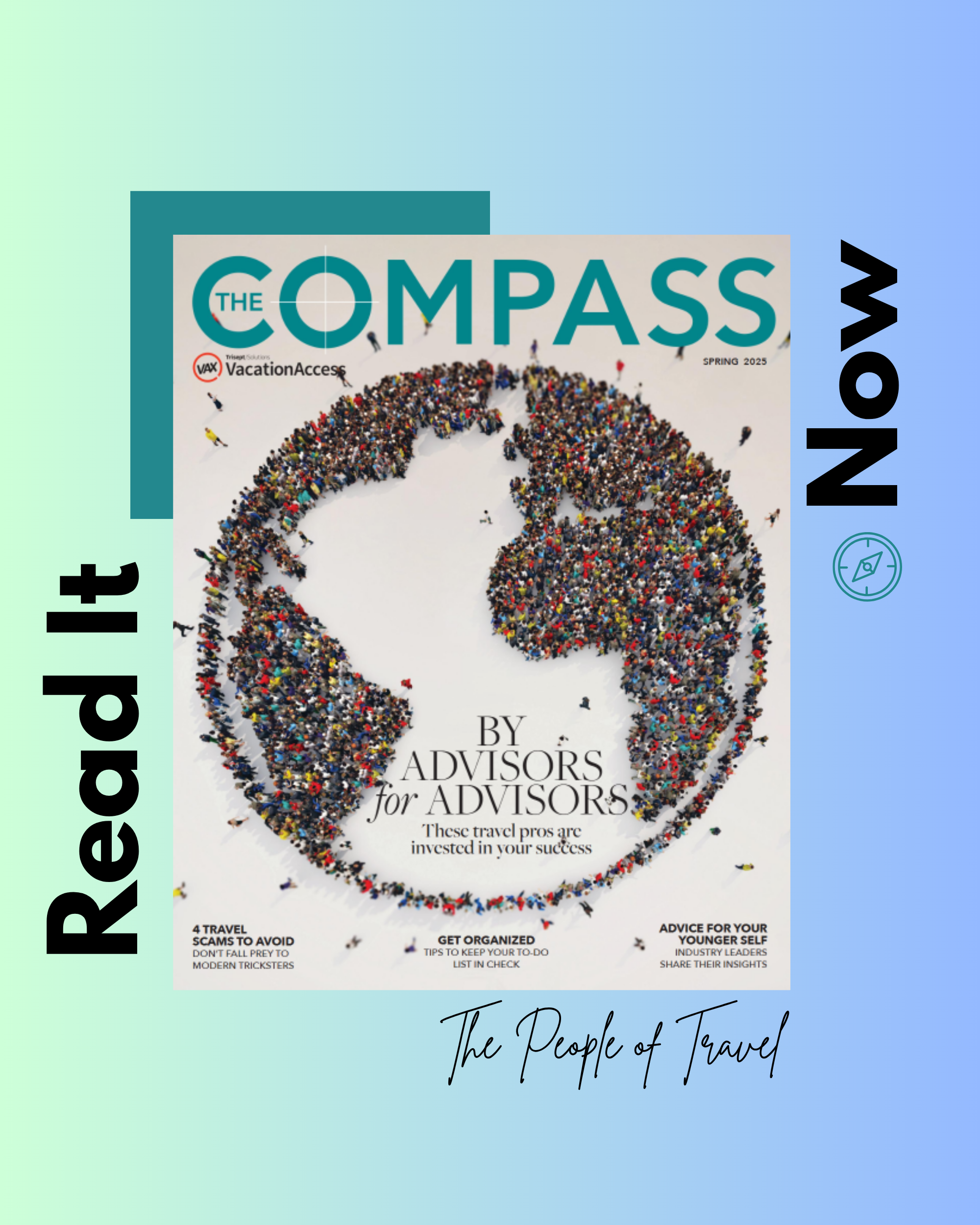Do you ever feel like you’re at war with your to-do list? From chasing follow-ups and managing client details to making bookings and keeping up with the latest industry updates, the life of a travel advisor is a busy one. It doesn’t take much for daily tasks to begin stacking up, and, as important deadlines start to loom, you might find yourself feeling stressed and overwhelmed, especially if you struggle to keep everything on track.
Alas, if this scenario is beginning to sound a little too relatable, don’t fret. Instead, look to an essential business cornerstone: organization. “Organization isn’t just about keeping your desk tidy or having the right tools — it’s about mindset,” said Jennifer Dugan, chief family officer and founder of Dugan’s Travels. “When you take time to establish systems, you’re setting yourself up for long-term success. Missing deadlines, neglecting follow ups or forgetting to respond to emails will slow you down and may hurt your business.”
Despite sounding simple, getting organized can feel like a big job. If you need help figuring out where to start, try following this practical advice to re-work your processes and better optimize your time.
Have the Right Tools
An avid fan of what she calls “organized systems,” frameworks and processes used to keep a business running smoothly, Dugan loves helping others find success through organization. As such, it’s no surprise she follows the same framework at her agency. “For us, it’s about having the right tools in place to ensure everything from lead generation to post-booking follow-up is handled efficiently,” she said. Similarly, Dugan shared that prioritizing organization has helped her team avoid bottlenecks, resulting in less stress and excellent customer service. “For our agents, it means that they can access important information quickly and stay on top of their workload,” she said. “For clients, it means better service and fewer mistakes.”
So, what exactly are “the right tools” for advisors looking to get more organized? According to Dugan, Not So Annoying CRM and Asana are two essentials. “We use Not So Annoying CRM to track changes in both agent and supplier interactions,” she said. “This CRM has been a game-changer in managing our client and agent relationships. It helps us capture and organize data, streamline communication and ensure we’re on top of all moving parts. We also use Asana for our internal team to collaborate and stay aligned on tasks and deadlines, ensuring no detail is missed.” Another favorite is Google Calendar which Dugan recommends for sending automated emails and keeping up with reminders.
![]()
If you’re reading this and feeling hesitant to invest in a new tool, Dugan says to consider the impact it can have on your time and productivity. “Organization and time optimization are directly linked. When you’re organized, you’re able to allocate your time more effectively, knowing exactly what needs to be done and when,” she said. “Systems like our CRM and Asana ensure that our team isn’t wasting time tracking down information or figuring out what’s next. Instead, we can focus on high-impact tasks like securing new bookings and maintaining relationships with suppliers and clients. It’s a win-win for productivity — less time spent on administrative tasks means more time for selling and growing the business.”
Review Your Processes
No matter the tools you implement, Dugan says its crucial advisors review their processes on a regular basis. “Make time each day or week to review your processes and refine them as you go. The goal is to build small habits that help you stay on top of your workload and reduce chaos,” she said. “Are you still doing things manually? If so, it’s time to implement technology to help … Start with one area that feels disorganized and tackle it one step at a time.”
As for new advisors, Dugan says starting organized is a huge advantage. “Implement a CRM, set up your task management system and build processes from the very beginning,” she said. “It’s easier to create good habits early on than it is to fix bad ones later.” The bottom line is, it’s never too early, or too late, to get organized. “My advice is to start small, stick with it and continuously refine your processes,” said Dugan. “The more organized you are, the more you’ll see positive results.”
Processes To Try
Follow these Dugan’s Travels-approved organization processes for a smoother selling journey.
Initial Client Inquiry
A process for keeping leads organized
- Step 1: Acknowledge the Inquiry: Respond within 24 hours and collect essential information like travel preferences, destinations, dates and special requests.
- Step 2: Set Up Your CRM Entry: Use your CRM to keep track of details and any additional interactions.
- Step 3: Follow Up: Follow up within a set amount of time. Dugan recommends 48 hours, to ensure the lead doesn’t go cold. Use your CRM to set a reminder.
Booking Process
A process for when a client commits
- Step 1: Confirm Client Needs: Ask clarifying questions and review client preferences to ensure you understand the trip vision.
- Step 2: Offer Solutions and Options: Meet clients’ needs with a tailored set of options — including potential flights, hotels and excursions — as well as additional resources, brochures and links.
- Step 3: Confirm Booking Details: Confirm all booking details including pricing, accommodations, deadlines and payment terms with the client.
- Step 4: Don’t Forget: Set reminders to collect payments and necessary documentation.
![]()
Booking Completion and Payment
A process for securing that dough
- Step 1: Securing Payment: Provide a clear breakdown of payment schedules — including deposits or full payment — and include a payment link or instructions.
- Step 2: Documentation and Data Entry: Update your CRM to include finalized booking details, payment status and notes.
- Step 3: Send Confirmation and Details: Send a final confirmation email with all travel details and include your contact information for future inquiries.
Post-Booking Follow-Up
A process for continuing the client relationship
- Step 1: Pre-Trip Check-In: Reach out a few weeks before departure to confirm preparations and to answer last-minute questions.
- Step 2: Monitor Trip Progress: Track travelers in real-time and watch for disruptions, cancelations or any other issues to proactively address concerns.
- Step 3: Post-Trip Follow Up: Open the door to repeat business and referrals by sending a “thank you” note or survey when clients return home.
Originally appeared in the Spring 2025 issue of The Compass magazine







Lee A | 06/18/25 - 10:49 AM
Were you reading my mind? Wonderful article. Just what I needed. Thank you for all the great tips!
| reply ⋯